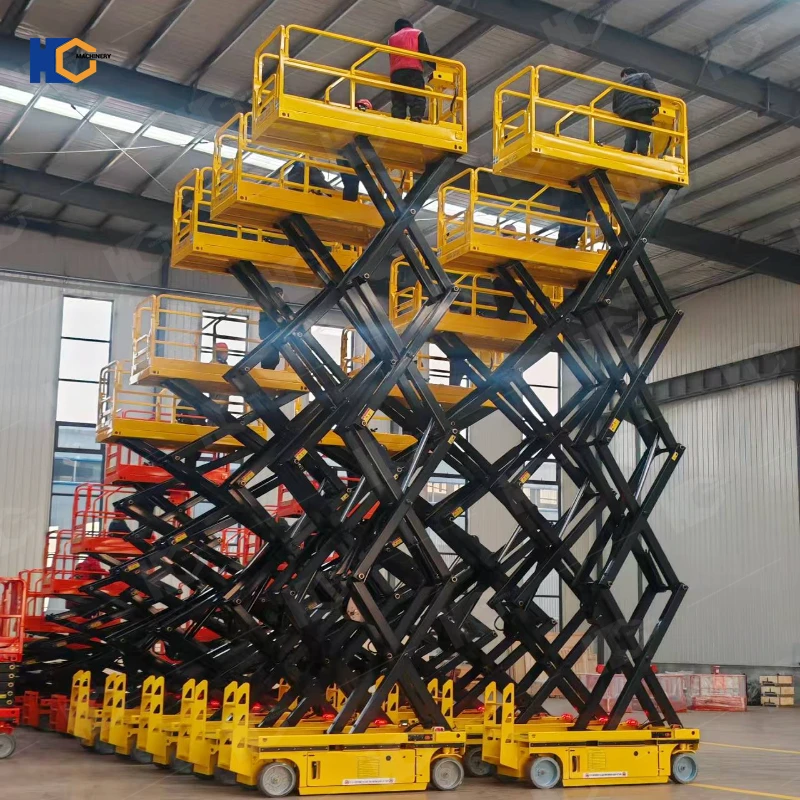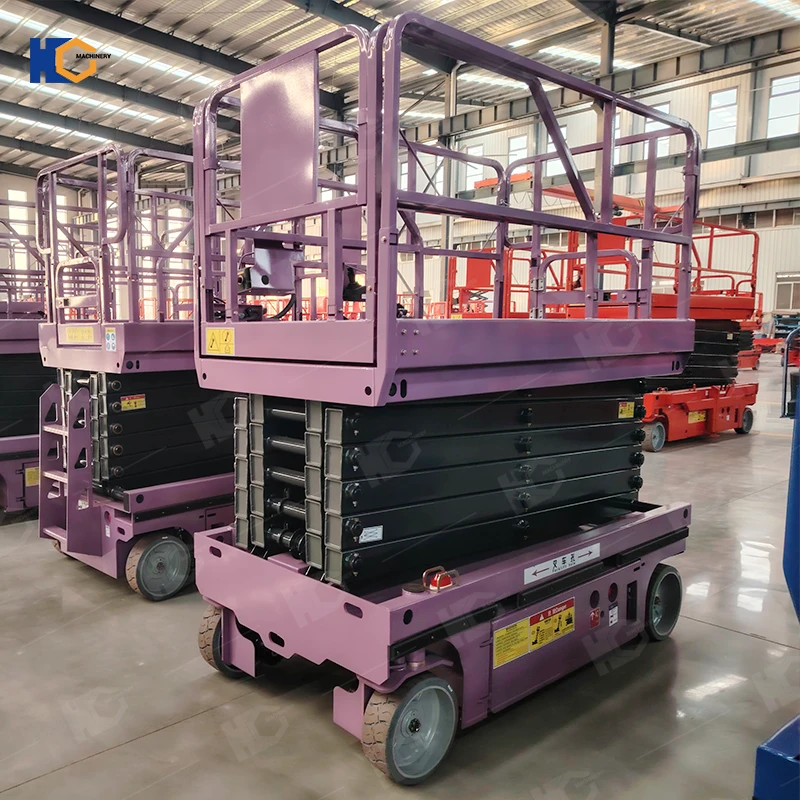1. What is a Scissor Lift?
A scissor lift (or scissor platform lift) is a mobile, telescoping aerial work platform designed to lift personnel, tools, or materials vertically. Its core mechanism uses a crisscrossed "scissor" arm assembly (typically 2–6 stages) that folds and extends to raise or lower the platform. Scissor lifts are widely used in construction, maintenance, retail, and industrial settings for tasks like ceiling repairs, electrical installations, inventory management, or equipment access.
Key features include:
Telescoping scissor arms: Provide vertical lift via hydraulic or electric power.
Platform: A flat, stable surface (often non-slip) with guardrails for safety.
Portability: Most models are wheeled or tracked for easy movement.
Load capacity: Ranges from 500 lbs (light-duty) to 5,000 lbs (industrial).
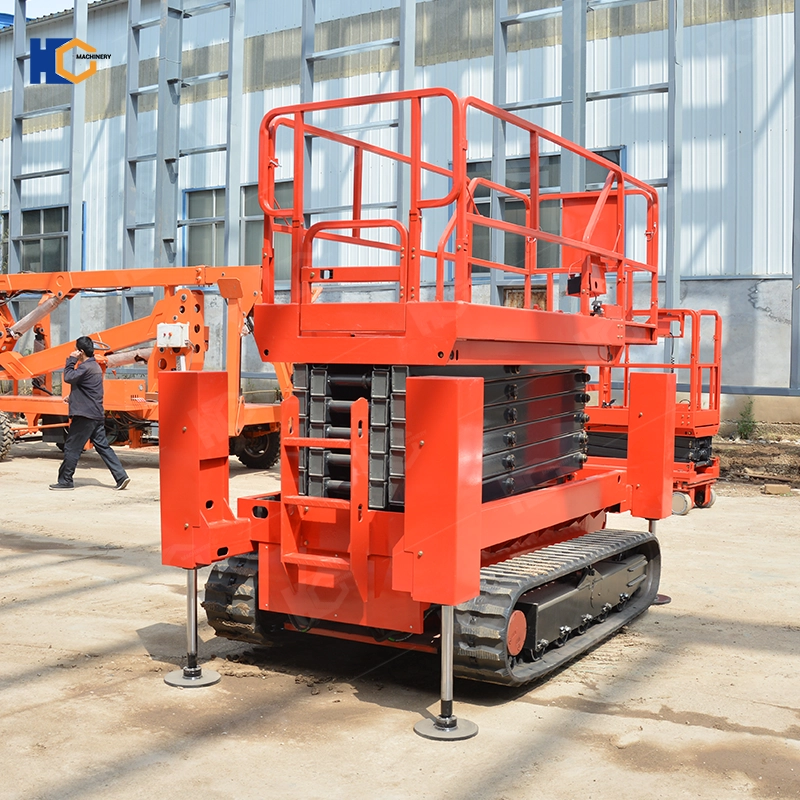
2. Scissor Lift Specifications & Weight Ranges (lbs)
The weight of a scissor lift depends on its platform height, load capacity, power source, and material. Below are typical weight ranges for common specifications (data from leading manufacturers like JLG, Genie, and Huichuang Lift):
(1) Compact/Portable Scissor Lifts (10–14 ft Platform Height)
Designed for indoor use, narrow spaces, or light-duty tasks (e.g., office ceiling repairs, retail stock checks).
| Specs | Typical Weight (lbs) | Key Features |
|---|---|---|
| Platform height: 10 ft | 800–1,200 | Electric-powered (48V), 2-stage arms, 500 lbs load. |
| Platform height: 12 ft | 1,000–1,500 | 3-stage arms, 600 lbs load, foldable for transport. |
| Platform height: 14 ft | 1,200–1,800 | 3-stage arms, 750 lbs load, rubber tracks for stability. |
(2) Mid-Range Scissor Lifts (16–20 ft Platform Height)
Suitable for outdoor use, construction sites, or medium-duty tasks (e.g., building facade cleaning, warehouse shelf access).
| Specs | Typical Weight (lbs) | Key Features |
|---|---|---|
| Platform height: 16 ft | 1,800–2,500 | Diesel-powered (optional electric), 4-stage arms, 1,000 lbs load. |
| Platform height: 18 ft | 2,200–3,000 | 4-stage arms, 1,200 lbs load, outriggers for uneven terrain. |
| Platform height: 20 ft | 2,500–3,500 | Heavy-duty steel frame, 1,500 lbs load, hydraulic pump for smooth operation. |
(3) Large/Industrial Scissor Lifts (22+ ft Platform Height)
Built for heavy-duty applications (e.g., industrial maintenance, large-scale construction, or warehouse racking).
| Specs | Typical Weight (lbs) | Key Features |
|---|---|---|
| Platform height: 22 ft | 3,500–4,500 | 5-stage arms, 2,000 lbs load, dual hydraulic pumps. |
| Platform height: 25 ft | 4,000–5,500 | 5-stage arms, 2,500 lbs load, telescopic stabilizers. |
| Platform height: 30 ft | 5,000–7,000 | 6-stage arms, 3,000 lbs load, reinforced steel frame. |
Notes on Weight Variability
Electric vs. Diesel: Electric lifts are typically 10–20% lighter than diesel models (e.g., a 14 ft electric lift weighs ~1,200 lbs vs. ~1,800 lbs for diesel).
Material: Aluminum alloy lifts (common in portable models) are 20–30% lighter than steel but have lower load capacities.
Customization: Adding features like outriggers, larger platforms, or heavy-duty tires can increase weight by 10–15%.
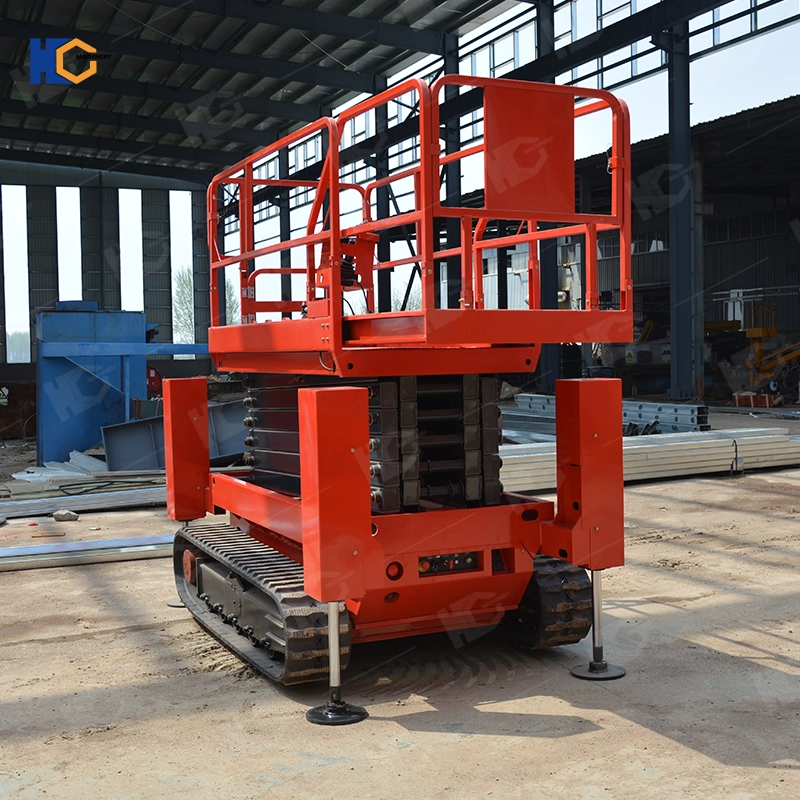
Example Manufacturer Data (Huichuang Lift)
Huichuang Lift’s scissor lifts (made in China) follow similar weight ranges. For instance:
HC-10C: 10 ft platform, electric, 500 lbs load → ~1,000 lbs.
HC-16D: 16 ft platform, diesel, 1,200 lbs load → ~2,800 lbs.
3. Transportation Considerations: Vehicle, Ship, or Container
When transporting a scissor lift by vehicle, ship, or container, weight is critical for safety, compliance, and cost. Below are actionable solutions for each scenario:
(1) Vehicle Transportation (Trucks, Trailers)
Most scissor lifts are transported via road using trucks or trailers. Key steps:
Step 1: Determine the lift’s total weight
Include the lift itself, accessories (e.g., outriggers, tools), and any added weight (e.g., fuel for diesel models). For example:A 16 ft diesel scissor lift (~2,800 lbs) + 500 lbs of tools = 3,300 lbs total.
Step 2: Match the vehicle’s payload capacity
Small trucks (e.g., pickup trucks): Max payload ~2,000 lbs. Suitable for compact lifts (≤14 ft, ≤1,800 lbs).
Medium-duty trucks (e.g., Ford F-350): Max payload ~5,000 lbs. Suitable for mid-range lifts (16–20 ft, ≤3,500 lbs).
Heavy-duty trucks (e.g., semi-trailers): Max payload ~40,000 lbs. Suitable for industrial lifts (22+ ft, ≤7,000 lbs).
Step 3: Secure the lift for transit
Use tie-down straps (minimum 4 straps) to anchor the lift to the truck bed.
Fold the scissor arms and platform to reduce height (e.g., a 20 ft lift folds to ~8 ft tall).
Distribute weight evenly to avoid tipping (e.g., place heavy components low to the ground).
(2) Ship or Container Transportation (Ocean Freight)
For international or long-distance transport, shipping via container or cargo ship is common. Key considerations:
Container weight limits:
20ft container: Max gross weight ~67,200 lbs (including cargo, container, and fuel).
40ft container: Max gross weight ~88,200 lbs.
Lift weight vs. container capacity:
A 25 ft industrial scissor lift (~5,500 lbs) + packaging (500 lbs) = 6,000 lbs total. This fits in a 20ft container (which can hold up to ~30,000 lbs of cargo).
A 30 ft lift (~7,000 lbs) + packaging (500 lbs) = 7,500 lbs total. This requires a 40ft container.
Securing the lift in the container:
Use wooden pallets or steel brackets to prevent movement.
Secure the lift with heavy-duty straps or chains to the container walls.
Cover the lift with a waterproof tarp to protect against weather damage.
(3) Regulatory Compliance
Local laws: Adhere to transport regulations (e.g., U.S. DOT, EU Road Safety Directive) for oversized/heavy loads. Permits may be required for lifts exceeding 8 ft in height or 10,000 lbs in weight.
Documentation: Include the lift’s weight, dimensions, and center of gravity in shipping papers.
Escort vehicles: For lifts >12 ft tall or >15,000 lbs, a pilot car may be required to guide traffic.
4. How to Choose the Right Scissor Lift for Your Transport Needs
To balance weight, capacity, and transport cost, follow these guidelines:
Indoor/light-duty use: Opt for compact electric lifts (≤14 ft, ≤1,800 lbs). They fit in small trucks and are easy to maneuver.
Outdoor/medium-duty use: Choose mid-range diesel lifts (16–20 ft, ≤3,500 lbs). They handle rough terrain and fit in medium-duty trucks.
Industrial/heavy-duty use: Select large steel lifts (22+ ft, ≤7,000 lbs). They require heavy-duty trucks or containers but offer maximum load capacity.

5. Example Scenarios
Scenario 1: A contractor needs to transport a 16 ft diesel scissor lift (2,800 lbs) to a construction site 200 miles away.
Solution: Use a medium-duty truck (payload ~5,000 lbs). Secure the lift with 4 tie-down straps, fold the arms to 8 ft height, and check local DOT permits for oversize loads.
Scenario 2: A retailer imports a 25 ft industrial scissor lift (5,500 lbs) from China.
Solution: Ship via a 40ft container (max payload ~88,200 lbs). Use steel brackets to secure the lift, add waterproof packaging, and comply with international shipping regulations.
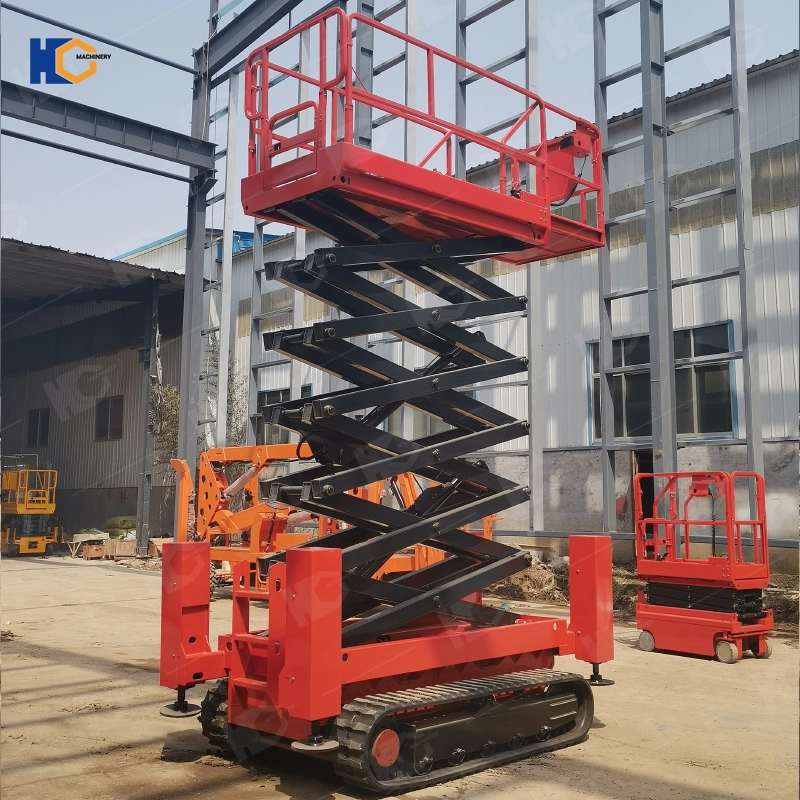
Conclusion
Scissor lift weights range from 800 lbs (compact electric) to 7,000 lbs (industrial steel), with transport solutions varying by vehicle, container, or ship. By matching the lift’s weight to the transport tool’s capacity, securing it properly, and complying with regulations, you can ensure safe and cost-effective delivery. Always consult the manufacturer’s specs and local laws to optimize your transportation plan.


